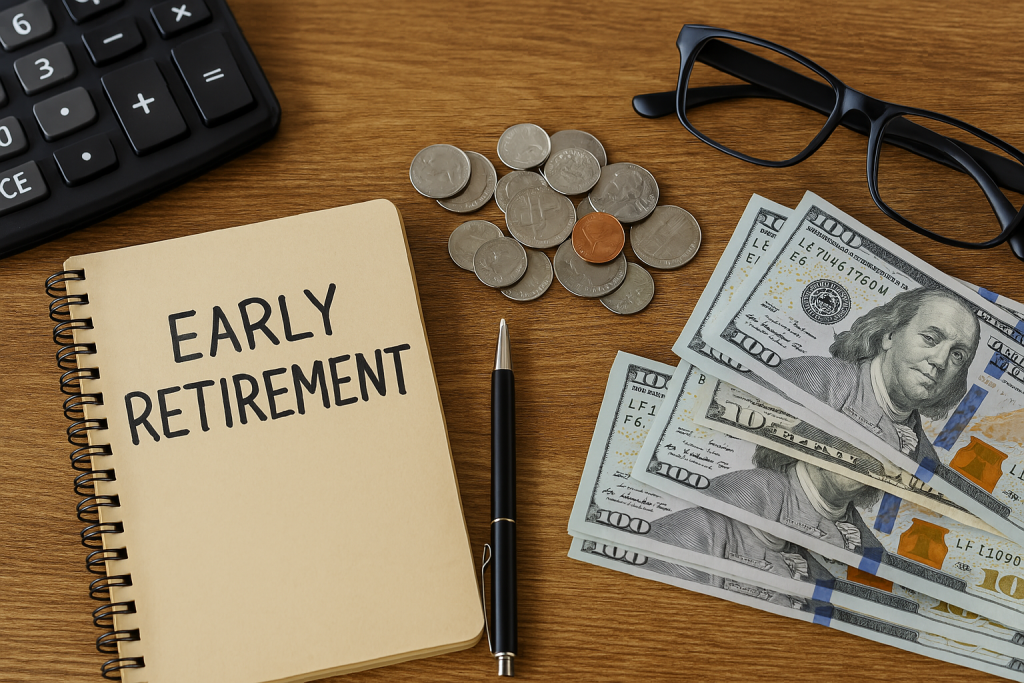Retiring early is no longer a dream reserved for the wealthy or the lucky. More people are realizing they can take control of their financial future and leave the workforce sooner than expected. With the right financial plan for early retirement, it’s possible to build a life with more time, more freedom, and less dependence on traditional career paths.
Achieving that goal takes strategy, organization, and financial discipline. It starts with understanding your future needs and creating a structure that supports long-term independence. A solid financial plan for early retirement is how you transform that vision into a concrete, achievable reality.
What is a financial plan for early retirement?

A financial plan for early retirement is a personalized roadmap that helps you save and invest enough to stop working earlier than most. Rather than depending on government pensions or employer retirement schemes, you build your own financial freedom. It’s about controlling your future, not leaving it to chance.
This kind of plan outlines how much you need, how long you’ll live off your savings, and how you’ll grow your wealth over time. It includes habits, strategies, and tools designed to help you stay on track. With commitment, even modest earnings can become enough.
Breaking the concept down
If you want to retire in your 40s or 50s, you need a realistic picture of your monthly expenses. Include housing, healthcare, travel, and hobbies. Your financial plan for early retirement is built on this lifestyle estimate, and grows as your income and discipline improve.
Why you should start planning right now
The sooner you begin saving, the more your money can work for you. Time and compound interest turn consistent habits into large results. Waiting just a few years to start can mean saving twice as much later to reach the same goal. Early action means less stress and more freedom.
With a clear financial plan for early retirement, you also avoid the uncertainty of future pension reforms or market instability. You’re no longer dependent on external systems—you rely on your own strategy. That sense of control is a major advantage.
Gaining time and personal freedom
Retiring early gives you time—the most valuable resource you’ll ever own. Whether you want to travel, volunteer, start a new business, or simply relax, that freedom starts with planning today. Your lifestyle can shift from reactive to intentional.
How to calculate how much you need
The first step is defining how much money you’ll need each month after retiring. Then, multiply that amount by the number of years you want your savings to last. Be sure to account for inflation, unexpected costs, and conservative investment returns.
One commonly used benchmark is the 4% rule. This guideline suggests saving enough to withdraw 4% per year of your total assets. Your financial plan for early retirement should aim to preserve principal while supporting your lifestyle comfortably and sustainably.
Tools that help with projections
Use retirement calculators and spreadsheets to estimate future income and expenses. These tools allow you to model different retirement ages, savings rates, and investment returns. They make it easier to adjust your financial plan for early retirement with real-world data and practical expectations.
Strategies to build your plan effectively
Start by tracking your current expenses and setting a realistic savings target. Invest regularly in diversified assets like index funds, real estate, or bonds. Avoid high-risk speculation; stability is key. Each dollar you save today builds future freedom.
Keep your lifestyle in line with your goals. A financial plan for early retirement only works if your spending matches your income and values. The more intentional you are with money now, the more options you’ll have later. Delayed gratification pays off.
The power of consistent contributions
Investing consistently—even in small amounts—beats waiting to invest large sums later. Set up automatic contributions to your retirement accounts to build momentum. Making savings non-negotiable reinforces your plan and keeps you moving toward your goal.
These habits create financial resilience and discipline. As your salary increases, increase your contributions. Your financial plan for early retirement thrives when saving becomes second nature, not just an occasional effort.
How much should you save? A sample projection
Your monthly savings goal depends on when you want to retire and how much you’ll spend. Below is a simple projection, assuming a 6% average annual return and retirement at 55. Use this table as inspiration for your own plan:
| Current age | Retirement age | Monthly savings | Estimated total |
|---|---|---|---|
| 25 | 50 | $1,500 | $1,000,000 |
| 30 | 55 | $2,000 | $1,050,000 |
| 35 | 55 | $3,000 | $1,080,000 |
| 40 | 55 | $4,500 | $1,020,000 |
While these numbers are helpful, remember that a financial plan for early retirement is personal. Your actual target depends on lifestyle, location, health, and goals. Reassess annually to stay aligned with reality and adjust accordingly.
Keeping the plan flexible
Your circumstances may change—so should your plan. A promotion, family change, or economic shift could affect your timeline. Flexibility ensures your financial plan for early retirement continues to support your long-term vision no matter what life brings.
Mistakes that can ruin your plan
One big mistake is underestimating inflation. Prices won’t stay the same for decades, and your purchasing power must grow accordingly. If you ignore this, you could find yourself cutting back later or returning to work unexpectedly.
Another major risk is not having an emergency fund. Life happens—medical bills, repairs, or family needs can arise. Without a cash cushion, you might tap into retirement savings early, derailing your plan. Protect your progress with a safety net.
Unrealistic expectations and risky bets
It’s easy to fall into the trap of expecting high investment returns every year. But a good financial plan for early retirement isn’t based on luck or aggressive gains. It’s built on steady growth and thoughtful decisions, even in uncertain markets.
Avoid chasing trends or trying to “beat the market.” Focus on what you can control: saving, spending wisely, and investing with patience. Over time, consistency wins. Risking everything for short-term gain can ruin long-term freedom.
Discipline and ongoing adjustments
Reaching your savings goal is just the beginning. Once retired, you’ll still need to monitor your investments, adjust withdrawals, and track spending. Regular reviews keep your financial plan for early retirement healthy and responsive to life changes.
Commit to checking your progress once or twice a year. Update assumptions based on inflation, market returns, or personal circumstances. Think of your plan as a living system—it grows and adapts with you over time. That’s what makes it sustainable.
Celebrate your wins along the way
Don’t wait until retirement to acknowledge your progress. Celebrate milestones like reaching savings targets or paying off debt. These moments fuel your motivation and make the journey more enjoyable. A financial plan for early retirement is about much more than money. It’s about gaining the freedom to choose how you live. With commitment, clarity, and patience, you can make that freedom a reality sooner than you think.



